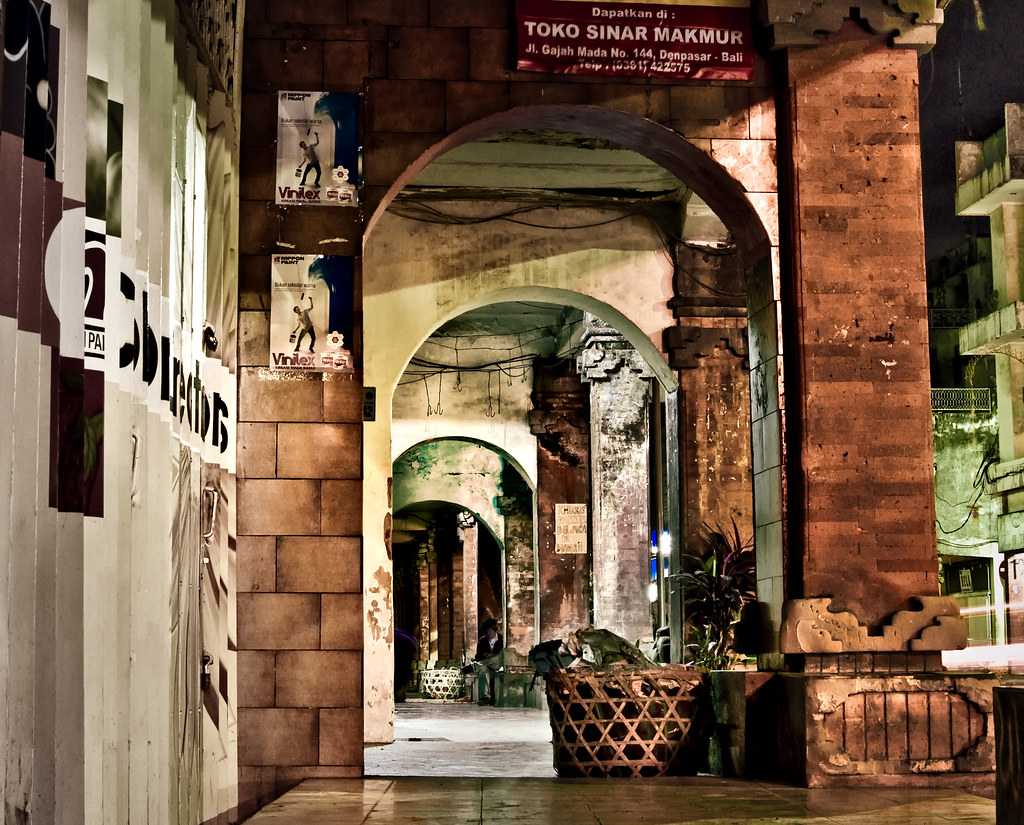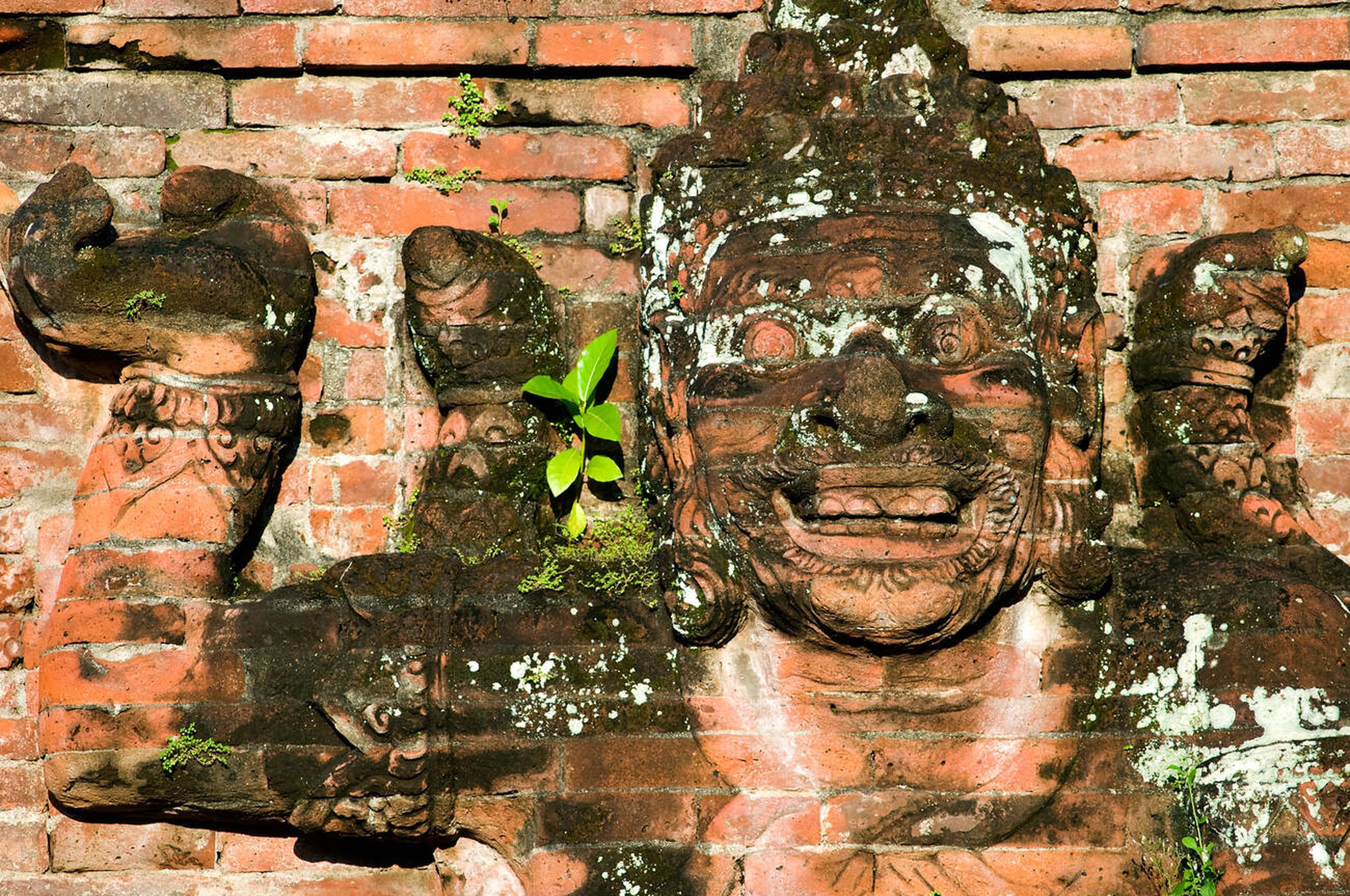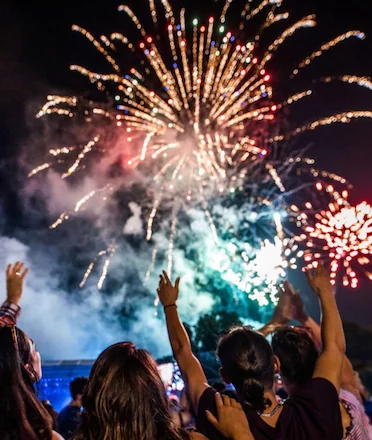Showcasing Denpasar’s rich history and serving as the city’s 'Zero Kilometer' point, Gajah Mada Heritage Street offers a vibrant glimpse into the heart of Bali's capital. A local saying, “Len tonden ke Gajah Mada, artine tonden ke Denpasar” (If you haven’t visited Gajah Mada, you haven’t been to Denpasar), highlights the street’s deep cultural importance to Bali’s capital. Here are some of the best activities to enjoy around Gajah Mada Heritage Street.
Showcasing Denpasar’s rich history and serving as the city’s 'Zero Kilometer' point, Gajah Mada Heritage Street offers a vibrant glimpse into the heart of Bali's capital
Enjoy Local’s Favorite Cuisine
One of the highlights of visiting Gajah Mada Heritage Street is indulging in the local food scene. The area is home to numerous warungs—small, family-owned eateries—that serve up authentic Balinese dishes. These humble establishments are where you’ll find some of the island’s most flavorful meals. Try nasi campur, a mixed rice dish with various toppings, or babi guling, Bali’s famous roasted pork. Vegetarian options like lawar (spiced vegetable salad) are also popular. Dining at a warung not only satisfies your taste buds but also offers a glimpse into Balinese hospitality and community life.

Experience Local Festivals
If your visit coincides with a local festival, Gajah Mada Heritage Street transforms into a lively cultural hub. Festivals such as Galungan and Kuningan bring the area to life with parades, traditional dances, and ceremonial offerings. The streets are adorned with penjor (decorative bamboo poles), creating a festive atmosphere. This year’s Imlek (Chinese New Year) was particularly special, as the street was adorned with hanging red lanterns, symbolizing prosperity and showcasing Denpasar’s embrace of cultural diversity.

Explore Pasar Badung Traditional Market
Pasar Badung, Bali’s largest and most iconic traditional market, is a sensory feast that captivates both locals and tourists. Spanning multiple floors, this market is a labyrinth of stalls selling everything from fresh produce and fragrant spices to colorful fabrics and handcrafted goods. Wander through the vibrant aisles and witness the daily hustle as vendors passionately tout their wares. Beyond shopping, the market offers an authentic look at Balinese life, with opportunities to interact with locals and sample street food favorites like satay and jajan pasar (traditional sweets).

Shop for Traditional Textiles
Gajah Mada Heritage Street is a haven for textile enthusiasts. The shops here specialize in traditional Balinese fabrics such as batik and endek, known for their intricate patterns and vibrant colors. These textiles are handcrafted using age-old techniques and are often adorned with symbolic motifs. Whether you’re looking for a sarong, scarf, or material for custom garments, the quality and craftsmanship are unparalleled. Many shops also offer insights into the weaving and dyeing processes, giving you a deeper appreciation for these cultural treasures.

Stroll Along the Vibrant Street
Taking a leisurely walk along Jalan Gajah Mada is like stepping into a living museum. This street, lined with colonial-era buildings, retains much of its old-world charm. Many of these structures have been preserved and now house shops, cafés, and offices. As you walk, you’ll notice the blend of old and new, with modern establishments nestled within historic façades. The area is also dotted with small gardens and benches, providing spots to rest and soak in the atmosphere. Street vendors selling snacks and local crafts add to the lively ambiance, making it a delightful place to explore on foot.
Nearby Attractions
Gajah Mada Heritage Street is not only steeped in history but also surrounded by captivating attractions that reflect Bali’s cultural and spiritual essence. From iconic landmarks to ancient temples, this area provides a fascinating glimpse into the island’s vibrant past. Here are some must-visit spots nearby that promise an enriching experience.
Bali Museum

Located just a short walk or 2-minute drive from Gajah Mada Heritage Street, the Bali Museum is a cultural gem that houses a vast collection of artifacts, art, and historical exhibits. The museum’s architecture, blending traditional Balinese and colonial styles, is as captivating as its contents. Inside, you’ll find ancient tools, ceremonial masks, textiles, and paintings that narrate Bali’s rich history. Each pavilion focuses on different aspects of Balinese life, from prehistoric artifacts to contemporary art. A visit here is essential for anyone wanting a comprehensive understanding of Bali’s cultural evolution.
Catur Muka Statue

A short 5-minute walk or a 2-minute drive from Gajah Mada Heritage Street, the Catur Muka Statue stands proudly at the center of Denpasar’s main roundabout. Each of the four faces represents vigilance and protection in all directions. The statue, surrounded by a fountain, is particularly striking at night when it’s beautifully illuminated. Many locals believe it to be a powerful guardian of the city. Visitors often stop here for photos and to appreciate its intricate design, making it a key attraction for those exploring the area.
Pura Maospahit

Just a 10-minute walk or a 3-minute motorbike ride from Gajah Mada Heritage Street, Pura Maospahit is an ancient temple located on Jalan Sutomo. Pura Maospahit, an ancient temple dating back to the 14th century, stands as a testament to Bali’s deep spiritual roots. This temple is unique for its Majapahit-inspired red brick architecture, a rarity in Bali. As you step into its serene courtyards, you’ll be transported back in time. The temple’s intricate carvings, stone statues, and sacred relics provide a glimpse into the island’s pre-colonial past.




 Billy Bagus
Billy Bagus
 Dec 02, 2024
Dec 02, 2024






